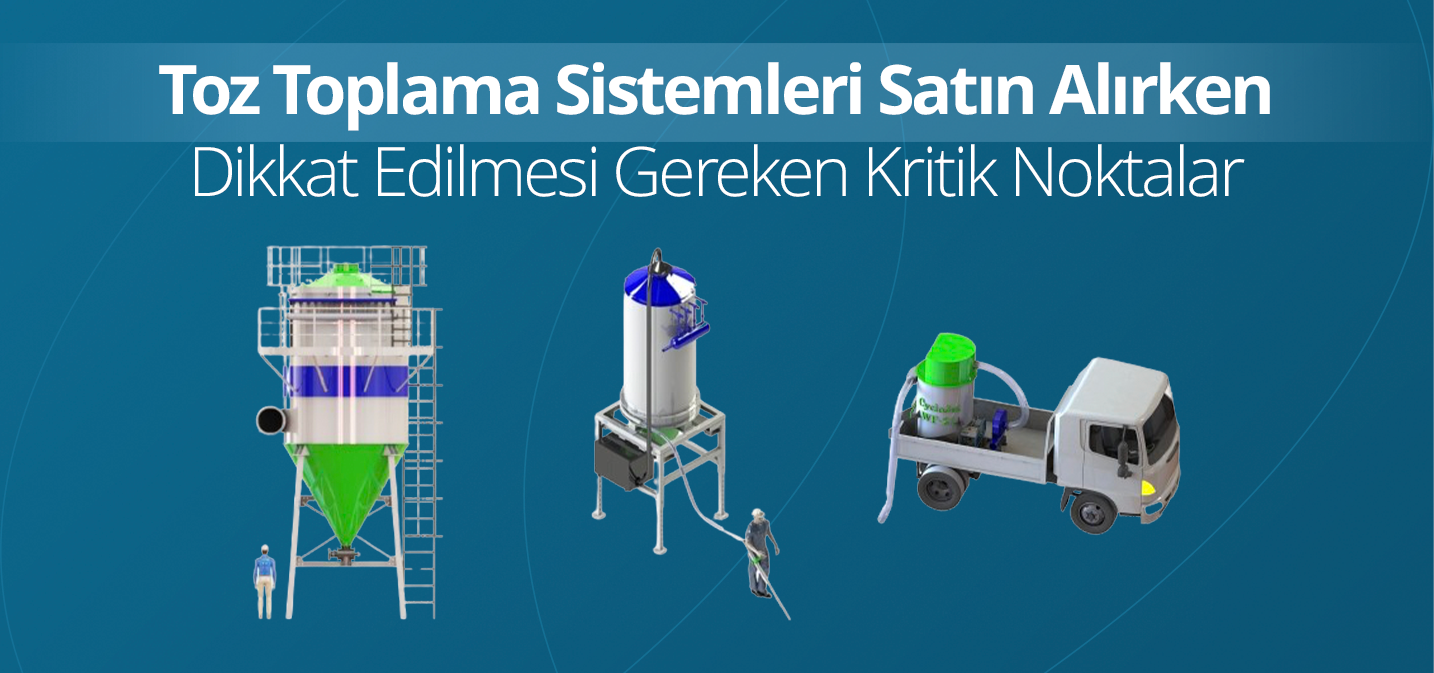
How to Choose the Right Dust Collection System for Your Business: A Comprehensive Purchasing Guide
In industrial facilities, air quality is vital for both employee health and production efficiency. Dust generated during production processes not only threatens human health but also shortens the lifespan of machinery and equipment. The most effective solution to this problem is a properly designed dust collection system.
So, what should you consider when choosing the “right” dust collection system for your business? What criteria should you evaluate to ensure this investment becomes a long-term productivity tool rather than just a cost item?
Here is our comprehensive purchasing guide with critical points to walk you through the process, step by step.
Step 1: Clarify Performance Criteria
As with any machine, the most important question is: How will we measure performance? You must start by defining the key criteria that separate a successful system from a failed one.
Air Quality Target or Air Flow Rate?
- Air Quality Based on Personal Exposure Limits: The Ministry of Environment and Urbanization has established legal dust exposure limits for employees for each process. At first glance, demanding an air quality level below these limits seems like the most logical goal. But be careful! Typically, only about half of the dust pollution in an environment comes from “fugitive dust” scattered during production. The other half is generated by the re-suspension of spilled materials due to foot and vehicle traffic.Conclusion: If you are purchasing a system that only collects fugitive dust, it is difficult to meet the air quality target alone. However, if you also include high-pressure floor sweeping systems in the project, then you can hit this target bullseye.
- Acceptance Criteria Based on Air Flow Rate to be Filtered: In dust collection systems, capacity is most simply defined as the “amount of air filtered per hour” (m3/hour). This is a more tangible and measurable criterion. So, how do you know the flow rate you need?
- Machine Manufacturer’s Data: Companies that manufacture to global standards always specify the required dust extraction flow rate for their machines and provide a connection point. If a manufacturer cannot provide this information, it is wise to be skeptical about that machine’s design.
- Literature Calculations: For standard equipment such as conveyor belts, screens, and crushers, the required suction points and flow rate values are available in engineering literature and reliable sources. (For example, the documents section on the ASEL Teknik website offers a useful guide on this topic.)
- Calculation Based on Cross-Sectional Area: At every point where dust is generated, there is a required “capture velocity” to capture the dust along with the air. When the hood’s cross-sectional area is dimensioned to provide this velocity, it becomes quite easy to calculate the necessary air flow rate for each point.
Step 2: Evaluate the Mechanical Criteria
The healthier the heart of the system, the longer and more efficiently it will operate. Here are the mechanical details to watch for:
- Differential Pressure Value: This value is the clearest indicator of how clogged your filters are. When the system is first commissioned, the differential pressure value should not exceed 1,000 Pascals and should maintain this value for at least a one-week test. In a good system, this value should not exceed 1,500 Pascals after 6 months of use. This is proof that the filter elements were chosen correctly and are sufficient in number.
- Filter Bag Placement and Size: If not enough space is left between the bags, the air velocity increases, which both makes cleaning (shaking) difficult and causes the bags to wear out quickly. Critical Information: Literature shows that the ends of bags longer than 2 meters cannot be cleaned efficiently and clog up in a short time. Therefore, limiting the bag length to 2 meters is a smart criterion for the system’s lifespan.
- Cleaning (Jet-Pulse) Valves: Typically, 1” or 1 ½” diameter valves are used. You should specify in your technical specifications which type of valve will be used and the maximum square meter of bag area each valve will clean.
- Dust Discharge System: How will you dispose of the collected dust? Will it be transferred to a big bag or a silo? If possible, choosing an automatic discharge system that does not require personnel will save you both time and labor in the long run.
- Special Precautions for Minerals: Factors such as the abrasiveness, moisture, or temperature of the material being processed directly affect the selection of both the filter material and the system’s body steel.
- Vacuum Fan Specifications: The fan is the engine of the system. Be sure to add details such as noise level, impeller speed, motor and bearing brands, lubrication method, and vibration limit values to your specifications.
Step 3: Determine Electrical and Automation Requirements
A modern system requires a smart control infrastructure. Ensure your control panel can perform the following checks:
- Level control in the dust collection hopper
- Control of adequate compressed air for cleaning
- Filter clogging (differential pressure) monitoring
- Fan motor amperage control
- Synchronized start/stop with the machines the system serves
- Visual/audible alarms in case of malfunction
Additionally, you can set your quality standard by specifying whether a PLC and operator screen will be used for overall system control and by naming the brands of the switchgear (contactors, fuses, etc.) to be included in the panel.
Step 4: Don’t Overlook Other Important Considerations
- Ducting, Hoods, and Stack: If the dust collection system is the heart, the ductwork is the veins. The system is meaningless without the channels. For correct fan selection and a realistic cost estimate, it is critical that the ducting, hoods, and stack designs are clarified during the proposal stage.
- Body Sandblasting and Painting: To ensure your machine can operate for years without rusting in harsh environmental conditions, define the quality of sandblasting and painting (e.g., paint brand and number of coats) in your specifications.
- References: Finally, always request information on similar projects and references from the company you are getting a quote from. Successful projects are the best guarantee.
In conclusion, purchasing a dust collection system is much more than just selecting a piece of machinery. It is an investment in your business’s future. A conscious choice made by carefully evaluating the criteria above will provide you with an efficient, safe, and healthy working environment that will serve you for years to come.
air flow rate, air quality, big bag, differential pressure value, dust collection system, filter bag, Pascal, performance
